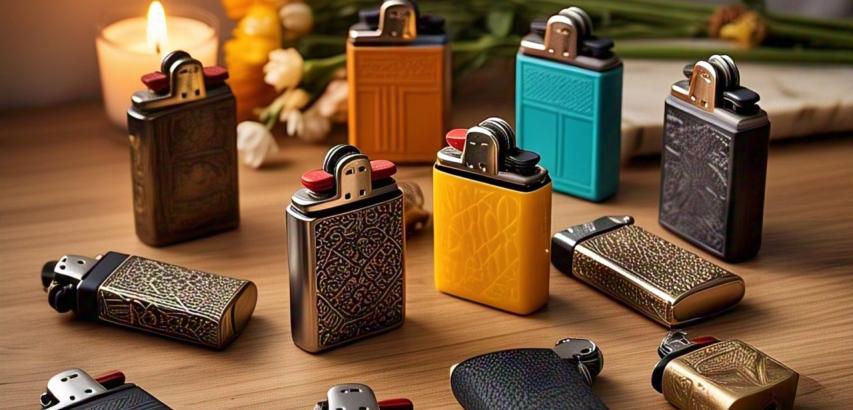
Lighters are everyday tools that produce a flame, commonly used for lighting cigarettes, candles, or even starting fires during outdoor activities. The technology behind lighter manufacturing has evolved significantly over the years, combining precision engineering with advanced materials to ensure safety, reliability, and efficiency.
Types of Lighters and Their Technologies
Flint Lighters:
Ignition Mechanism: Creates a spark by striking a flint with a metal wheel.
Fuel Source: Typically uses liquid fuel like butane or lighter fluid.
Manufacturing Process:
Flint Production: Made from ferrocerium, shaped into small rods.
Assembly: The flint is positioned with a spring-loaded wheel.
Fuel Chamber: A sealed tank is filled with butane or naphtha.
Advantages: Simple design, cost-effective, and reliable.
Piezoelectric Lighters:
Ignition Mechanism: Uses piezoelectric crystals to generate a high-voltage electric spark.
Fuel Source: Primarily butane.
Manufacturing Process:
Piezoelectric Element Production: Made from materials like quartz or ceramic.
Ignition System Assembly: The crystal is compressed to generate a spark.
Fuel Injection: Butane is pressurized and stored in a metal or plastic tank.
Advantages: Long-lasting and safe, as no flint is needed.
Electric Arc Lighters:
Ignition Mechanism: Generates an electric arc using a high-voltage current.
Power Source: Rechargeable batteries, typically lithium-ion.
Manufacturing Process:
Battery Production: Lightweight and efficient lithium-ion cells.
Circuit Board Assembly: Microcontrollers regulate the arc.
Charging Port Integration: Usually USB-compatible for easy charging.
Advantages: Windproof and eco-friendly.
Windproof Jet Lighters:
Ignition Mechanism: Produces a jet-like flame using high-pressure butane gas.
Manufacturing Process:
Nozzle Production: Fine metal jets for concentrated flame.
High-Pressure Tank Assembly: Ensures strong flame output.
Advantages: Ideal for outdoor use, even in windy conditions.
Manufacturing Steps for a Typical Butane Lighter
Design and Prototyping:
CAD software is used to design ergonomic shapes and flame mechanisms.
Material Selection:
Plastics, metals, and synthetic rubbers are chosen for durability and safety.
Injection Molding:
Produces the outer casing and fuel tank components.
Ensures leak-proof designs through precision molding.
Assembly Line Process:
Flint or Ignition System Installation: The ignition mechanism is securely placed.
Fuel Filling: Automated systems inject butane or other fuel under high pressure.
Safety Checks: Each unit is tested for ignition efficiency and fuel leakage.
Quality Assurance:
Random sampling is conducted to ensure consistency.
Flame height and stability tests are performed.
Packaging and Distribution:
Packaged in child-resistant containers and labeled with safety warnings.
Modern Innovations in Lighter Technology
Smart Lighters: Equipped with Bluetooth and sensors to monitor fuel levels.
Eco-Friendly Designs: Rechargeable electric lighters reduce plastic waste.
Safety Enhancements: Childproof mechanisms and automatic shut-off features.
Challenges in Manufacturing
Safety Regulations: Adhering to international standards to prevent accidents.
Fuel Efficiency: Balancing flame power with fuel consumption.
Environmental Concerns: Reducing disposable plastic lighter waste.
Lighter manufacturing is a sophisticated process that blends engineering precision with safety measures. As technology continues to advance, modern lighters are becoming more efficient, eco-friendly, and versatile. From traditional flint designs to cutting-edge electric arc lighters, innovation continues to drive the evolution of this essential everyday tool.
 |  |  |